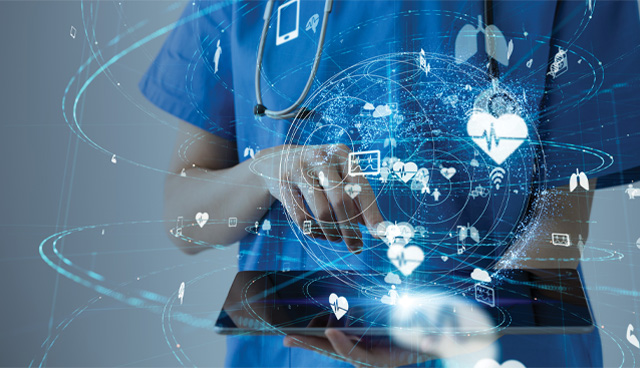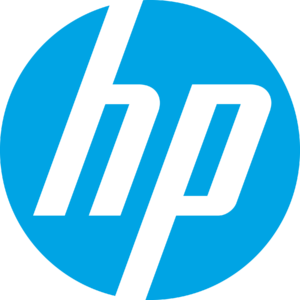How can IT best support the evolving healthcare delivery model?

 HP Inc. Ireland hosted a virtual round table discussion with experts from across the health sector, applying their experience and insight to examine how IT can best support the evolving healthcare delivery model.
HP Inc. Ireland hosted a virtual round table discussion with experts from across the health sector, applying their experience and insight to examine how IT can best support the evolving healthcare delivery model.
What are the key drivers of innovation in healthcare delivery?
Gemma Garvan
Every aspect of peoples’ lives is becoming more digital and the associated expectations of patients and clinicians is a big driver for changes to healthcare delivery models. Additionally, policy is providing us with a framework to deliver healthcare in the most appropriate setting, including in the community. To enable that, we need the evidence that the quality of outcomes for patients are equivalent in these other care settings. Data is vitally important in this regard.
Loretto Grogan
Technology has permeated every aspect of our lives, but it hasn’t really reached into healthcare like it should have. There is a public expectation of being able to digitally interface with healthcare and so, patient expectation is a key driver and I think we will see patient expectation driving the change agenda more in the next number of years.
Raphael Jaffrezic
The key drivers of innovation are the same as those driving better healthcare delivery, that’s why we are doing them. We need to be able to improve on the efficiency of clinical workflow using technology because the health system is being overwhelmed. Innovation should be aimed at reducing the stress on the system and the staff. In the past year, we’ve shifted to a world where everyone is looking at data and graphs on a daily basis and we’re seeing population health management on a larger scale than we have previously. The importance of data and particularly clean data, at national and international level, is evident.
“Given the speed of change, cyber security is now a bigger challenge than ever before and healthcare faces a challenge to remain vigilant against attacks, which can be extremely costly.”
— Neil Dover, Country Manager, HP Ireland
Paul McKinney
Innovation is patient driven. The Irish Blood Transfusion Service needs to become more innovative and we need to look at our organisational culture. The average age of our donors is significantly growing and now sits at around 45 years of age. We need more young donors and to do that we need to get into the spaces where they are and deliver our marketing message into those areas. Finance is also a large driver of innovation. We are expensive in terms of the cost of a unit of blood compared to some other European countries, so we are obliged to try and drive that cost down through innovation. Finally, benchmarking is an innovation driver. We’re part of the European Blood Alliance and there are several exemplars of innovative ideas in other blood services around Europe which we can learn from.
David Wall
The change of healthcare delivery models, such as the moving of services back into the community or off campus is driving innovation because we’re forced to find different ways to deliver our care. We’ve also witnessed an increased appetite from staff to be more innovative and enhance their own or the hospital’s service delivery. In response, we’ve created structures for ideas to come forward and utilised the existing structures and supports around public sector innovation. Additionally, we now have a generation that have grown up in the digital world. Ireland possesses one of the best technology start-up sectors in the world and we’re seeing innovations coming forward as a result of people’s personal interactions with the system.
Neil Dover
Adoption of innovative technology in a healthcare setting not only supports staff retention but helps to meet the increase in service demand. Necessity drives staff innovative practice to get better outcomes with limited resources. HP’s healthcare solutions are focused in three areas: prevention; personalisation of diagnostics and treatment; and low-cost access to healthcare. These are based on two pillars: the decentralisation of diagnostic tools for capturing health status; and processing data into personalised, readily accessible and actionable health care information in the clinical sphere, on-site data gathering and processing for immediate insights into planning better patient outcomes.
To what extent has Covid-19 accelerated this evolution?
Raphael Jaffrezic
The pandemic has driven the need to share data more openly and safely. We have many success stories of collaboration between the public and the private sectors in beginning to share data very rapidly. Within weeks of Covid, we had to adopt electronic platforms for patient data on a large-scale and in a safe way. The pandemic has also required us to look at healthcare in alternative ways. Remote health is something that was possible beforehand, but it was more targeted at people living in isolated geographic areas without access to healthcare facilities. Now it is a daily occurrence for almost everyone. Clinicians, physicians, and organisations had to deliver this within a relatively short period of time. Just before the pandemic hit, we were working on a policy for remote working up to two days per week. We were about to make this policy live when Covid hit and we needed 100 people working offsite, immediately.
“PCs, software, etcetera are just tools to complete a specific goal. What we want is to implement clinical solutions that have a tangible impact on improving clinical outcomes.”
— Raphael Jaffrezic, CIO, Galway Clinic
Gemma Garvan
Healthcare moves at such a pace that people don’t have time to really examine the processes and the need to change how we are delivering that care. However, Covid forced us to re-evaluate that. One of the most significant changes to emerge from the pandemic is the rapid review of how care is delivered. Due to the nature of the pandemic, we couldn’t not treat patients, yet the increased risk of having large numbers of people attending as outpatients wasn’t practical anymore. We adopted and enhanced the remote consultation process. Once forced to adopt and utilise the technology, the benefits became apparent. Covid also forced a change in behaviour and instilled in practitioners a confidence to deliver outpatient consultations remotely. The alternative was that waiting lists would grow longer and people would have to wait longer for treatment. Simultaneously, the emergency scenario heralded a reduction of the regulatory and procurement bureaucracy required to introduce new technologies and implement change. The enhanced availability of funding also helped accelerate some of those changes.
Paul McKinney
From the perspective of IBTS, due to the public health restrictions, we had to change our business model literally overnight. We introduced an appointment system for all our mobile clinics. It was a change we had aspired to for five years. With the onset of the pandemic, it was introduced in under two weeks. Had we not been successful in changing this process, we would have struggled to provide the volumes of blood required by the hospitals. Now that the appointment system is implemented, there will be no return to the status quo. Our donors want appointments to stay and will accept nothing less. Likewise, prior to the pandemic, our business model was not conducive to remote working. It has now pivoted entirely, and we have been able to adapt with a very high percentage of our staff working remotely.
“We are in a very reactive scenario with Covid, but if we are moving to a more proactive health service, we need data at a national level to inform decision making.”
— Loretto Grogan, National CIO for Nursing and Midwifery, HSE
Loretto Grogan
We have witnessed colleagues adopting technologies that we could not have envisaged one year ago. There has been no other option, people have had to adapt and respond to patient need. This fostered collective thinking, planning and decision making, which have made a huge difference. The pandemic has also been useful in highlighting some of the unsustainable challenges that face anyone working in digital health. For instance, Covid has highlighted that we have gaps in our syntactic and semantic interoperability. It has highlighted inequalities in connectivity and access to networks. It has highlighted challenges in digital capabilities among our colleagues. It has highlighted that our national business processes are protracted, particularly for digital. We now know exactly what these challenges are and can start addressing them, freeing up space for innovation.
David Wall
I want to expand on the collective momentum prompted by Covid. Having that singular focus across every government department, among staff and across patients to tackle the pandemic, enabled quicker decision making, the release of funds and enhanced resources. It was a key enabler for removing obstacles that previously existed around time, funding, and resources, facilitating the delivery of solutions in a timely manner. If we could maintain that singularity all the time, beyond this one pandemic, we could make serious inroads in terms of digital health in Ireland.
Neil Dover
The Covid-19 pandemic has upended everything, from the global economy to how we live, work, and connect with one another. We are looking at times like these as a catalyst for change, both in terms of the technology HP creates for its customers, as well as the impact it makes for its communities. We have seen an acceleration on the digital transformation of e-health over the past year. From telemedicine to shortages of PPE, the medical field is relying on new and emerging technologies such as 3D printing for prosthetics, and microfluidics to combat the pandemic. HP’s sanitisable portfolio is well recognised in the healthcare space, and demand has spiked through the pandemic with trends suggesting that this interest will be sustained in the long-term. Meanwhile, I don’t think that the evolution of the workforce is complete. Different ways of working and training will continue to evolve and immersive technologies, IoT and cloud computing will increasingly influence how we interact in the workplace on a day-to-day basis, particularly in a healthcare environment.
What are the most significant challenges in implementing new IT solutions to support healthcare delivery?
Loretto Grogan
A massive challenge is around interoperability and the sharing of information. From a semantic point of view, it is about data of a standardised meaning and from a syntactic perspective, it is about the exchange of that standardised data. Sláintecare is our national health policy and integrated care is a huge component of that but currently we have real challenges integrating information or ensuring the right information follows the patient. Implementation of the Individual Healthcare Identifier [IHI] will assist with this, but more broadly, we need to improve our basic infrastructure. A further challenge is around digital capabilities and ensuring that we have a workforce that is proficient and competent in digital health.
“The main focus for us nationally should be to ensure that we adopt standards that are agreed and adhered to so that we can collectively use data effectively.”
— Gemma Garvan, Director of Health Informatics, St James’s Hospital
Gemma Garvan
Funding allocation is a major challenge. Typically, our IT spend goes through a capital model of funding, but technology has moved on and a lot of the offerings are revenue-based/revenue recurring. If we implement solutions, we can’t then take them away and so we must have the ability to continue funding them. We need to address how that funding stream is allocated to technology at a national level and move away from once-off capital funding to future-proof these services and enable more efficient digital health delivery. Another challenge is the aligning of national and group objectives with local and immediate need. The delivery of a technology solution for the immediate need versus the current process of change is still something that we’re constantly challenged with from a hospital perspective and I assume across all levels of healthcare.
David Wall
The sustainability of solutions is the challenge. Many of the solutions that we’ve introduced in response to Covid will be retained and in fact, people want more of them. However, some of the solutions introduced in the short-term will need to be supported on a long-term footing. This also feeds into the long-term digital maturity of different healthcare organisations. We’re all at different levels of digital maturity and further investment is needed to bring organisations up to the required levels if they are to fully exploit the digital solutions. Finally, I’d point to a talent challenge. Covid-19 has changed the marketplace substantially and it is becoming increasingly difficult to hire staff and retain them because of other opportunities in the public and private sector. We are examining our talent acquisition and recognising the challenge ahead in acquiring ICT talent.
Paul McKinney
I foresee a backlog challenge. A lot of innovation has occurred as a result of Covid-19 but there have also been planned projects that were postponed. There is going to be a significant demand for those projects and an associated challenge of prioritisation. A further challenge, and potential opportunity, is system data integration and the efficiencies that can come from that being done properly. Access to hospital blood usage and planned elective surgeries information would dramatically improve our demand forecasting and service planning.
Neil Dover
Given the speed of change, cyber security is now a bigger challenge than ever before and healthcare faces a challenge to remain vigilant against attacks, which can be extremely costly. The three most common vulnerabilities we have identified are end user authentication deficiencies, endpoint leakage and excessive user permissions. In HP, we have been working hard to ensure that we have the most secure range of healthcare PCs and printers in the world. In tandem with that we have the most sustainable PC portfolio in the industry, which can benefit healthcare organisations in reducing their energy consumption.
How can data support better decision making?
Raphael Jaffrezic
Data is demonstrably supporting physicians in decision making and I think it has been there for decades. I don’t think that is something that is new. For instance, clinical decision support systems are designed to provide safe and effective drug management, ensuring that no patient can be prescribed a drug that would interact negatively with one of the drugs that have already been administered. Fortunately, those are solutions that we have had within our organisation for over half a decade. That is an example at a local level, but with Covid we are seeing population health management and healthcare delivery on a large-scale with data being at the forefront. The development of new technologies, such as AI, will further enable better decision making.
Paul McKinney
Blood and platelets have a relatively short lifespan of 35 and seven days respectively. A real challenge for the IBTS, therefore, is how to forecast demand and to do so we need more data. Currently, the forecasts we make are not made using live data, rather we look back on previous usage. Instead, we would like to understand what volume of blood and blood components hospitals will require next week or next month. For instance, if we could access elective operations planning then we could better plan our clinics staff allocation and the blood groups we need to collect. We are making plans to improve our decision making and aspire to receive and send more information to and from hospitals relating to real time demand for and use of blood.
Gemma Garvan
Healthcare is all about evidence-based decision making. That’s what clinicians are trained to do. If we are going to support changes to the healthcare delivery model and implement Sláintecare, we need the data to provide evidence, which informs this shift. The data must indicate that the clinical outcomes of a change of care setting are equivalent or improved, so that we can move away from the expensive secondary care delivery model to modern healthcare delivery. The main focus for us nationally should be to ensure that we adopt standards that are agreed and adhered to so that we can collectively use the data effectively. In St James’s Hospital, we have been very lucky in terms of Covid management. We have our Electronic Patient Record and have had that real time data available to us to drive some of the decision making around Covid.
Loretto Grogan
We are in a very reactive scenario with Covid, but if we are moving to a more proactive health service, we need data at a national level to inform decision making by us, by clinicians and by patients. There is a significant opportunity to develop data that enables patients to manage their own healthcare better. Having that quality data is vital. Ireland has a good track record in research and good infrastructure through the Health Research Board and other entities. However, our research is still very siloed, and we don’t have a mechanism for taking in big datasets. Meanwhile, from a national perspective, it is essential that we start to examine workforce planning for digital health. We need to develop skillsets in terms of analytics and managing digital health infrastructure.
“Many of the solutions that we’ve introduced in response to Covid will be retained and in fact, people want more of them.”
— David Wall, CIO, Tallaght University Hospital
David Wall
There are a lot of information silos in the Irish healthcare sector. We still have a lot of disparate and separate systems. Even when patients are transferred or referred for treatment, they don’t necessarily come with all the required information or that information isn’t necessarily shared. We must get better at sharing data. Obviously, that is underpinned by better standards and better interoperability. It doesn’t necessarily mean rolling out national systems either, it just means agreeing a set of standards that everyone must comply with in order to facilitate data exchange. It’s also about having people better trained to interpret the data trends in healthcare organisations. We want to have data which facilitates targeted treatment on an individual basis.
Neil Dover
Access to data in real-time enables informed decisions to put patient experience and outcomes at the forefront of every clinical decision and critical care scenarios. The Covid-19 pandemic has accelerated the need for data analytics at healthcare facilities, the ability to track real-time information on available hospital bed, PPE, and ICU capacity can help health leaders make more informed decisions. HP has the technology to support patient decisions powered by HP Z portfolio technology which is helping to analyse data closer to the edge. Innovation that may not be as familiar is our solutions around bespoke apps whereby we can collect data at a multifunction printer. This removes an obstacle and facilitates the collection of good quality data, enabling a degree of analytics conducive to a more targeted healthcare model.
What are the IT solutions that you are most excited about?
Neil Dover
I would have to call out 3D printing and the specific use cases in healthcare that have changed patient lives and healthcare worker safety. HP 3D printing solutions including prosthetics, PPE and surgical equipment have benefitted more than one million patients, and that is something we are very proud of. Other areas that are transformative specifically for healthcare are virtual reality and other immersive technologies. These technologies are already being applied in numerous ways such as surgical planning, medical education and patient virtual assessments. HP have deployed these technologies across many healthcare facilities and are evolving to become an everyday use case for the healthcare industry to improve patient outcomes.
Gemma Garvan
Internet of things and artificial intelligence are being more widely utilised in healthcare and they stand out as the areas where we are going to see the most exciting developments in transforming our healthcare delivery models. We have a good example at St James’s Hospital where, within our sleep therapy clinic, we are deploying wearable devices to reduce long waiting lists for this service, facilitating care for patients in a more appropriate setting and ultimately, improving the patient experience. I think we are going to see an awful lot more of this technology being applied to deliver on the Sláintecare model.
Loretto Grogan
Cloud computing and AI are the solutions that excite me the most. Although, I also think a focus on people is a large part of IT solution innovation. I work every day with innovative people across the country. It is an exciting space, but we need to create the space for that innovation to happen.
Raphael Jaffrezic
The most exciting thing for me is the IT solutions that best deliver better patient outcomes. What is required of clinical informatics is the delivery of clinical solutions. PCs, software, etcetera are just tools to complete a specific goal. What we want is to implement clinical solutions that have a tangible impact on improving clinical outcomes.
“From the perspective of IBTS, due to the public health restrictions, we had to change our business model literally overnight.”
— Paul McKinney, Operations Director, Irish Blood Transfusion Service
Paul McKinney
As the sole supplier of a product to the hospitals, we would love to be more digitally integrated with hospitals. It is exciting because I see this happening sooner rather than later. Other IT solutions we are delivering are in the space of communicating with our donors. It is quite clear that the appointment system we installed in response to Covid is not going to change and so we are planning to build on this with an online system to meet changing expectations. We are also excited about the potential of robotics, which is already happening in Europe, particularly in the area of manufacturing and process blood and blood components.
David Wall
There is no longer such a thing as an ICT project, they are all clinical transformation projects and that is where the future is. Personal assistants are an area we see big opportunity. There are various examples throughout the world where Google Home and Amazon Echo are being used to tell patients the waiting time in their local emergency departments, or to deliver personalised content and help with recuperation. Robotics also offers a huge opportunity. Many hospitals are already deploying robotic surgery but there are other areas to exploit such as blood sampling, goods transportation within hospitals and robotic pharmacies. The focus of our projects to take tasks away from staff to release their time to care for our patients.
Round table participants
Neil Dover
Neil Dover was appointed Country Manager for HP Ireland in August 2019. A graduate from DCU in Computer Applications. He has over a decade experience in various management roles across the HP business in Ireland. Neil is passionate about HP brand innovations and the strong re-invention spirit, which support customers ambitions delivering premium value, and tangible world class solutions. Neil is an active member of Ibec, Chambers Ireland and a professional member of the Irish Computer Society.
Gemma Garvan
Gemma Garvan was appointed as the Director of Health Informatics for St James’s Hospital in 2018. Gemma qualified from Trinity College Dublin with an undergraduate degree in computer science and software engineering and a master’s degree, alongside a leadership certificate from Cranfield Universities Business School. She has over two decades of experience in health informatics and holds various advisory roles at national and European health informatics forums. Prior to taking up her current role, Gemma had a national role as the Director for Access to Information in the HSE with a remit that included devising a National Integration Strategy to support the Electronic Health Record Programme for Ireland.
Loretto Grogan
Loretto Grogan is the National Clinical Information Officer for Nursing and Midwifery in the Health Service Executive. Loretto started her career as a registered general nurse in Beaumont Hospital and since then has completed further studies in information systems, statistics, health economics, project management, health innovation and has an MSc in health informatics. Loretto has worked in a variety of clinical, management, research, and project management roles both within and outside of the health service. She is a professional member of the Irish Computer Society.
Raphael Jaffrezic
Raphael Jaffrezic is the Chief Information Officer of the Galway Clinic, a private hospital in the west of Ireland. He holds a master’s in IT engineering and business management. Raphael has been involved in healthcare transformation throughout his whole career, starting from a technical role as an IT engineer then progressing to an executive position. The Galway Clinic was the first hospital in Ireland and the UK to reach HIMSS (Healthcare Information and Management Systems Society) Stage 6. He is also a black belt in Lean Six Sigma.
Paul McKinney
Paul McKinney is Operations Director for the Irish Blood Transfusion Service (IBTS). Paul is responsible for the collection and processing of blood and blood components as well as donor recruitment and retention for the Republic of Ireland. He is Chairperson of the European Blood Alliance (EBA) business contingency working group and a member of the EBA bench marking group. Paul has held senior executive management and board positions in the private, public, and social enterprise sectors and holds a degree in computer science and business administration from Queen’s University Belfast and a master’s in business administration from Durham University.
David Wall
David Wall was appointed Chief Information Officer for Tallaght University Hospital in July 2015. David’s role is focused on transforming ICT into a more valued business partner by improving the capability of the ICT organisation, aligning ICT activities with hospital priorities, and leveraging digital more effectively to deliver eHealth solutions to improve and support patient care. In addition, David has responsibility for information governance, healthcare records and telephony. David holds a diploma in strategy, innovation and change from the Smurfit Business School, an MSc in health services management and a BA in business information management. Prior to his current role, David held senior ICT positions in the Children’s Health Ireland, Temple Street Children’s Hospital and St Vincent’s University Hospital.





